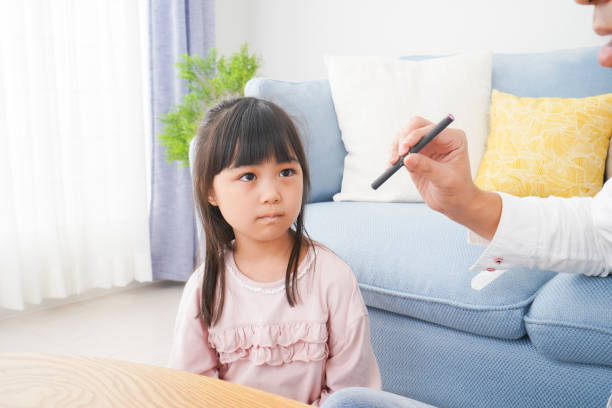As a parent, kudos to you for stepping forward and taking responsibility for enlightening your children about the possible hazards associated with e-cigarettes and vaping.
This comprehensive article offers valuable guidance on effectively discussing this subject with your children and emphasizes the importance of such conversations for their overall health and welfare.
Read on to discover effective ways to navigate this challenging conversation.
Starting the Conversation: Tips on How to Introduce Vaping to Your Kids
Before discussing the specifics with your kids, you must know the proper approach to starting a conversation with your children. Here are some tips to get you started.
Choose the Right Time and Place
Selecting a comfortable and private environment for discussing vaping with your child is crucial in ensuring they feel at ease and open to the conversation.
To choose the right time and place, consider the following suggestions:
a. Avoid distractions
Pick a time when both you and your child can focus on the conversation without interruptions. Turn off the television, put away electronic devices, and ensure no background noise could hinder your discussion.
b. Opt for a neutral location
Choose a setting where your child feels relaxed and safe. This could be at home, a park, or a favorite coffee shop. Avoid discussing the topic in a tense environment or immediately after an argument, as this might make your child feel defensive.
c. Gauge your child’s mood
Observe your child’s emotional state before initiating the conversation. If you wait for a better time when they are more receptive to the discussion, you can have a productive conversation.
d. Be mindful of your own emotions
Approach the conversation with a calm and open demeanor.
If you feel anxious or angry, your child may sense your emotions and become less receptive to the discussion.
Taking a few deep breaths or practicing mindfulness techniques can help you stay composed during the conversation.
By carefully selecting the right time and place for discussing vaping with your child, you create a supportive environment that encourages open communication and more effective dialogue.
This creates an excellent chance for you and your child to engage in candid conversations, appreciate each other’s viewpoints, and develop together constructively.
Be Honest and Open
When discussing vaping with your child, it’s crucial to present accurate information without exaggeration or scare tactics.
To maintain honesty and openness during the conversation, consider these tips:
a. Research the facts
Before engaging in the discussion, familiarize yourself with the most recent data and studies about vaping.
By offering precise and current details, you bolster your reliability and boost the probability of your child being responsive to the information you share.
b. Share personal experiences or anecdotes
If you have personal experiences or know someone who has struggled with vaping, consider sharing these stories.
Relatable anecdotes can make the information more tangible and help your child understand the real-life implications of using e-cigarettes.
c. Address misconceptions
Your child may have heard myths or misconceptions about vaping from friends or social media.
Be prepared to debunk these falsehoods with accurate information to help them develop a well-rounded understanding of the topic.
d. Discuss health risks
Clarify to your child that while vaping carries possible health concerns, including lung problems, heart issues, and nicotine dependence, it remains a valuable method for quitting smoking.
Be specific about the dangers without resorting to fearmongering. For example, you could point out that vaping may lead to reduced lung capacity or heightened chances of developing heart disease.
e. Highlight the addictive nature of nicotine
A child must understand that nicotine, the primary substance found in e-cigarettes, can lead to addiction and enduring health issues.
Explain that nicotine addiction can make it challenging to quit vaping and negatively impact their overall well-being.
Being honest and open when discussing vaping creates a foundation of trust with your child.
This approach encourages them to take the information seriously and make informed decisions about e-cigarettes based on facts rather than fear or misinformation.
Listen and Engage
Active listening and genuine engagement are essential when discussing vaping with your child. It allows you to understand their perspective and address their concerns effectively.
Here are some strategies to help you listen and engage during the conversation:
a. Ask open-ended questions
Encourage your child to share their thoughts and feelings about vaping by asking open-ended questions.
These questions give them the opportunity to express their opinions and experiences without feeling pressured or judged. For example, you might ask, “What do you think about vaping?” or “How do your friends feel about e-cigarettes?”
b. Validate their feelings
Acknowledge and validate your child’s emotions by expressing understanding and empathy. For instance, if they express concern about peer pressure to vape, you might say, “I understand how difficult it must be to face that kind of pressure from your friends.”
c. Be non-judgmental
Avoid reacting with anger or judgment if your child shares information that surprises or concerns you. Rather, adopt a composed and encouraging attitude, which can make your child feel at ease while sharing their opinions and experiences.
d. Encourage critical thinking
Prompt your child to think critically about the information they’ve received about vaping. This may involve discussing marketing strategies used by e-cigarette companies or analyzing the potential consequences of vaping on their health and well-being.
e. Offer guidance and support
While it’s essential to listen and engage, also provide guidance and support based on the information you’ve shared about vaping.
Motivate your child to choose healthy options and assure them that you’re accessible for support if they require guidance or resources.
By actively listening and engaging with your child during the conversation about vaping, you create a supportive environment that fosters open communication.
This approach helps your child feel heard, valued, and more inclined to take your advice and guidance to heart.
Provide Age-Appropriate Information
Tailoring the conversation to suit your child’s age and maturity level is crucial for effective communication about vaping. To provide age-appropriate information, consider the following tips:
a. Simplify complex concepts
Break down complex ideas into simple terms that your child can easily grasp. For example, instead of using technical terms like “nicotine addiction,” explain that nicotine is a substance in e-cigarettes that can make people feel like they need to keep using them even when they don’t want to.
b. Use relatable examples
Incorporate examples and analogies your child can relate to, making the information more accessible and meaningful. For instance, you might compare the addictive nature of nicotine to the feeling of craving their favorite snack.
c. Adapt to developmental stages
Bear in mind that children at different ages possess distinct levels of comprehension and cognitive capabilities. For younger children, use simple language and focus on the basic concepts of vaping and its potential dangers.
For older children or teens, offer more comprehensive details and participate in conversations regarding social and peer influences, along with the lasting health consequences of vaping.
d. Utilize visual aids
Consider using visual aids, such as pictures, videos, or infographics, to help convey information more effectively.
Visual aids can be particularly helpful for younger children who might have difficulty understanding abstract concepts.
e. Encourage questions and curiosity
Invite your child to ask questions and express their curiosity about vaping. Answer their inquiries clearly and age-appropriately, ensuring they feel comfortable seeking further information or clarification.
By providing age-appropriate information and using language your child can easily understand, you make the conversation about vaping more engaging and meaningful.
This approach enables them better to comprehend the potential risks and consequences of e-cigarette use, empowering them to make informed decisions about their health and well-being.
Offer Support and Resources
Ensuring your child feels supported and has access to resources is crucial for helping them make informed decisions about vaping. To offer support and resources, consider these strategies:
a. Reassure your child
Let your child know you’re there for them, regardless of their choices. Express your unconditional love and support, which can provide a sense of security and encouragement for them to make healthy decisions.
b. Create a safe space
Foster a home environment where your child feels comfortable discussing sensitive topics like vaping. Establishing open lines of communication can make it easier for your child to approach you with questions or concerns in the future.
c. Share helpful resources
Provide your child with reliable resources such as educational websites, pamphlets, or books to learn more about vaping. Encourage them to explore these resources and gain a deeper understanding of the potential risks and consequences associated with e-cigarette use.
d. Connect with professionals
If your child struggles with vaping or nicotine addiction, consider connecting them with healthcare professionals, such as doctors, therapists, or counselors. These experts can offer guidance, support, and treatment options to help your child overcome addiction and make healthier choices.
e. Encourage involvement in positive activities
Promote involvement in activities that provide a sense of accomplishment, camaraderie, and purpose, such as sports, clubs, or community service. Engaging in positive pursuits can help your child build self-esteem and resilience, making them less susceptible to the allure of vaping.
By offering support and resources, you empower your child to make informed decisions about vaping and reinforce their understanding of the potential risks. This approach demonstrates your commitment to their well-being and helps them feel more confident in navigating the challenges they may face regarding e-cigarette use.
The Importance of Educating Kids About Vaping
Parents must educate their children about vaping for several reasons. Here are some compelling factors to consider:
Health risks: Vaping can negatively affect a child’s health, including respiratory issues, heart problems, and nicotine addiction.
Peer pressure: Kids often face pressure to try vaping from their friends or classmates. Equipping them with the knowledge to resist this pressure can help them avoid potential harm.
Legality: In many places, it’s illegal for minors to purchase or use e-cigarettes. Informing your child about the legal implications can deter them from experimenting with vaping.
Role modeling: When parents discuss the dangers of vaping, they demonstrate their commitment to maintaining a healthy lifestyle and setting a positive example for their children.
Preventing addiction: Early education about vaping can help prevent nicotine addiction, which often begins during adolescence.
Conclusion
In conclusion, parents need to discuss vaping and e-cigarettes with their children. Start the conversation by choosing the right time and place, being honest and open, and engaging with your child’s concerns.
Provide age-appropriate information, offer support, and emphasize the importance of staying informed about vaping. Doing so will empower your child to make healthier choices and avoid the potential dangers associated with e-cigarettes.


